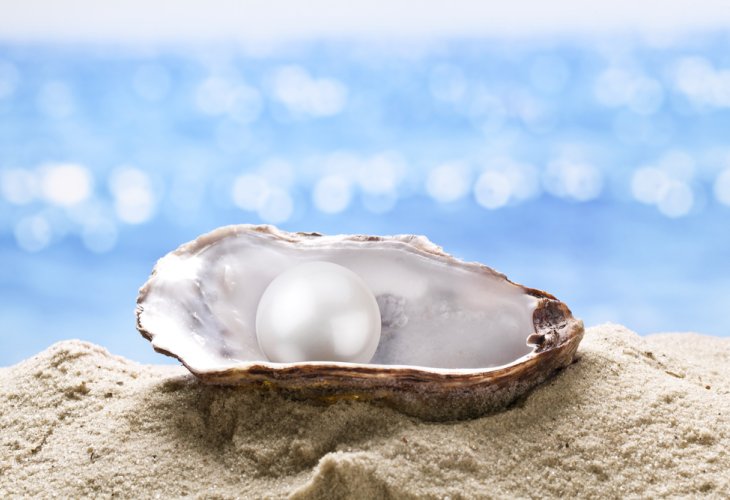Wonders of Creation
From Seashell to Gem: The Science and Art of Pearl Cultivation
Discover how natural and cultured pearls are formed, farmed, and valued in today’s global market
 (Photo: shutterstock)
(Photo: shutterstock)If walking at the beach makes you wonder about the countless shells and fragments scattered along the seashore, these are the protective casings of tiny marine creatures with very soft bodies, known as mollusks. These mollusks secrete a hardening mucus from special glands in their bodies, and this secretion forms the shell, which we commonly call a seashell.
Today, there are around 7,000 known species of mollusks worldwide. They live mostly in tropical and temperate regions, in shallow waters as well as at depths of thousands of meters. The smallest measure just a few millimeters, while the largest can reach over one meter in diameter and weigh 100–150 kilograms.
The Pearl Oyster
Among the most economically significant species is the pearl oyster, which produces pearls inside its body. Pearls are considered the first gemstone ever discovered by humans. Unlike metals and other precious stones that must be mined, cut, and polished, pearls emerge from nature with a natural beauty that requires no human touch.
For thousands of years, pearls — formed within a living creature deep in the sea, were a rare and mysterious phenomenon. In ancient times, they were so valuable that only the wealthiest families could afford pearl jewelry. Pearls became a universal symbol of wealth and status.
The Hidden Secret of the Pearl
In nature, pearls were extremely rare, as only about 1% of collected oysters contained a pearl. It could therefore take years to gather enough pearls for a single necklace. This scarcity puzzled people for generations, as they sought to uncover the secret of pearl formation.
The mystery was eventually solved by the Japanese. Working independently in separate labs, three Japanese researchers discovered that secretions from the oyster’s mantle produced the pearl. By introducing various irritants inside oysters, they observed that the oysters formed round pearls. After thousands of years of mystery, the puzzle was finally cracked.
How Pearls Form
We now know that natural pearls form when a small grain of shell or sand enters the oyster. This irritant causes the oyster’s mantle to grow a pocket called a pearl sac, which then secretes nacre, the substance that builds the pearl (also known as mother-of-pearl).
The man who achieved global recognition for this discovery was Kokichi Mikimoto. After years of research and experimentation, in 1908 he received a Japanese patent for producing the world’s first perfectly round cultured pearl. Mikimoto went on to found a pearl empire. At its height, his business owned more than 12 million oysters, producing about 75% of the world’s pearls.
Cultured Pearl Farming
Cultured pearls undergo a long and delicate process. Oysters are carefully collected and selected, then implanted with a nucleus through precise surgery. They are raised under strict conditions for several years. Many factors can kill the oyster or damage the pearl inside, including water quality, temperature, and natural disasters.
The process begins with artificial fertilization of oyster eggs. These fertilized eggs are raised under controlled water conditions for 15–25 days, then transferred into nets in seawater for 2–3 years. When mature, healthy oysters are chosen as “mother oysters” for pearl farming.
A small nucleus particle, usually taken from the shell of a Mississippi River oyster, is surgically implanted into the mantle of the mother oyster. This nucleus is ideal because its composition closely matches that of nacre, ensuring smooth pearl growth. Attempts to use plastic or stone nuclei were unsuccessful.
The surgical procedure is delicate because if the oyster’s soft tissue is damaged, it dies. After implantation, the oysters recover and are placed in wire cages in open seas, where conditions are closest to nature. They must be protected from algae, parasites, and storms such as typhoons. Despite careful monitoring, nearly half of the oysters die during the cultivation period — making surviving pearls even more valuable.
Cleaning and Care
Throughout the cultivation process, oysters must be cleaned at least 10 times. Other shellfish, algae, and seaweed often attach themselves to the cages, blocking water circulation and weakening the oysters. Water temperature is also crucial, and oysters are sometimes relocated to warmer waters during winter.
Despite all precautions, typhoons can destroy pearl rafts, dragging them out to sea. Pearl farmers often risk their lives working in dangerous storms. For these reasons, pearls harvested successfully are considered precious treasures.
The Pearl Market
Japanese cultured pearls are highly valued and exported worldwide. Their reputation rests on advanced Japanese techniques in both cultivation and jewelry design.
The global pearl market peaks between late December and February, in line with the pearl harvest season. Pearls are displayed in tanks by size and quality, and buyers evaluate them before bidding. Pricing depends on weight and five key parameters:
Luster
Surface quality (smooth or blemished)
Shape
Color (black pearls are the rarest and most expensive)
Size
Like diamonds, pearls are graded and priced accordingly. Fake pearls made of glass or plastic exist, but x-ray and microscopic inspection reveal the difference: genuine pearls have layered growth rings, while imitations are smooth inside.

